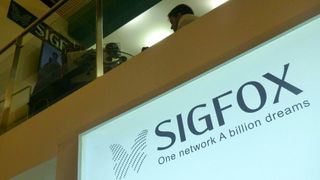Making sense of what's happening to Wi-Fi
Forget 5GHz – the IoT is bringing 802.11ax, HaLow, WiGig and LTE-U
What is Wi-Fi HaLow?
The narrowband IoT is driving new innovations in Wi-Fi and connectivity. Although many connected devices aimed at smart homes and industry can use Bluetooth or Wi-Fi, they need not more capacity, but more range. Based on the IEEE 802.11ah standard, HaLow uses the 900MHz band, which has a much greater reach, and doesn't require much power.
The flipside is that it only manages between 150KB to 18MB per second, but that's no big deal for smart home devices that only need to exchange tiny amounts of data. HaLow also goes through walls easier. An official standard of the Wi-Fi Alliance, expect HaLow to go live on tri-band routers in 2018.

What is LPWAN?
HaLow is basically a branded, Wi-Fi Alliance-certified flavour of Low-Power Wide-Area Network (LPWAN) technology that will work on powered Wi-Fi routers. Also a low-bandwidth connectivity tech ripe for the age of the IoT, cellular LPWAN dodges Wi-Fi access points in favour of mobile networks, but otherwise offers more or less the same features. Its key advantage over any Wi-Fi technology is lower power consumption.
LPWAN is better known as Sigfox, LoRa, HyperCat and Weightless, and claims to be the 'missing link' in the IoT for smart meters, smart cities, smart bins and anything else that needs to communicate over long ranges on low power.
Since it's less power-intensive than Wi-Fi, LPWAN will be favoured for smart farms and other really wide-area applications that use environmental sensors and motion sensors, but HaLow makes LPWAN less relevant in areas where Wi-Fi routers could be used instead – such as in the smart home and smart buildings.

What is LTE-U?
The 'U' stands for Unlicensed, though Qualcomm's LTE-U is also known as LTE-LAA (LTE-License Assisted Access). An effort to increase the capacity of LTE mobile networks, LTE-U tries to use some of the unlicensed spectrum – typically the 5GHz frequency band currently favoured by Wi-Fi – around the world that's currently not used. This varies between countries and regions, and some of that spectrum might already be used by short range radio transmissions by police, hospitals or industry.
LTE-U could be a way of extending LTE mobile networks where and when it's needed (it could even mean gigabit internet access for phones), but there are concerns that if mobile network operators go crazy for it, existing Wi-Fi networks could be squeezed. Therefore the Wi-Fi Alliance is against the use of LTE-U, and regulators are dragging their heels.
Are you a pro? Subscribe to our newsletter
Sign up to the TechRadar Pro newsletter to get all the top news, opinion, features and guidance your business needs to succeed!
Either way, with ABI Research predicting that more than 20 billion Wi-Fi chipsets will ship between 2016 and 2021, one thing's for sure – as mobile devices balloon in number and the IoT catches on, the thirst for faster, wider and better Wi-Fi is not going to let up.
Jamie is a freelance tech, travel and space journalist based in the UK. He’s been writing regularly for Techradar since it was launched in 2008 and also writes regularly for Forbes, The Telegraph, the South China Morning Post, Sky & Telescope and the Sky At Night magazine as well as other Future titles T3, Digital Camera World, All About Space and Space.com. He also edits two of his own websites, TravGear.com and WhenIsTheNextEclipse.com that reflect his obsession with travel gear and solar eclipse travel. He is the author of A Stargazing Program For Beginners (Springer, 2015),

